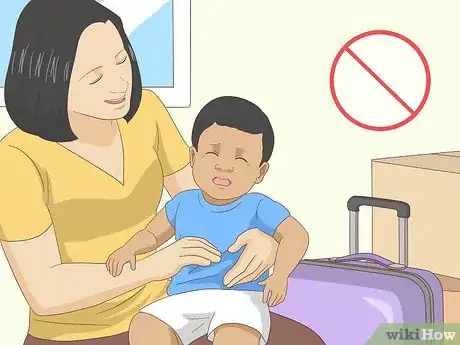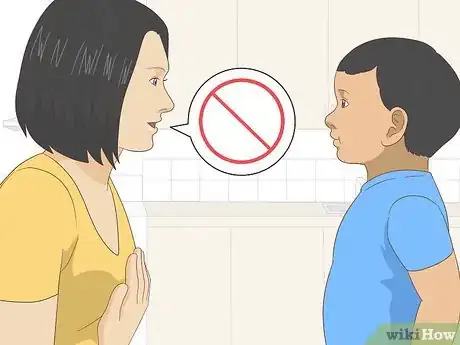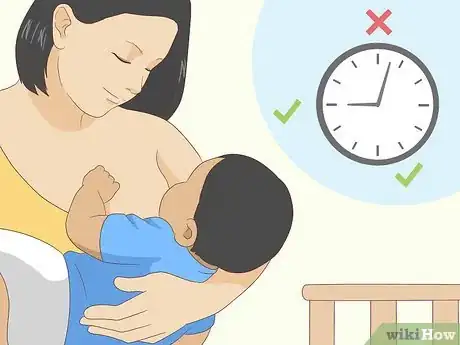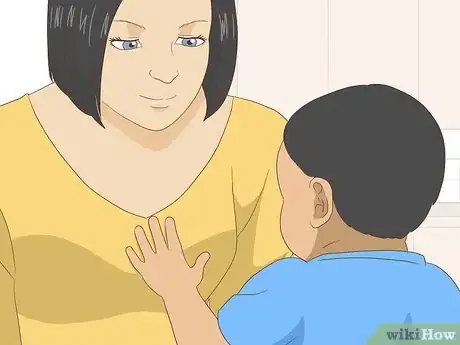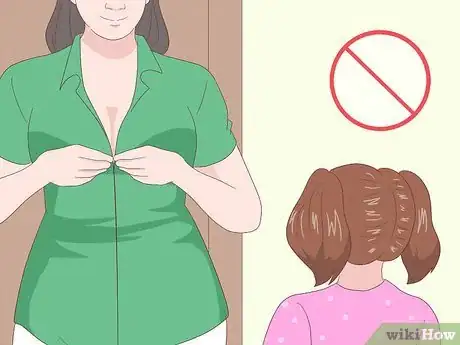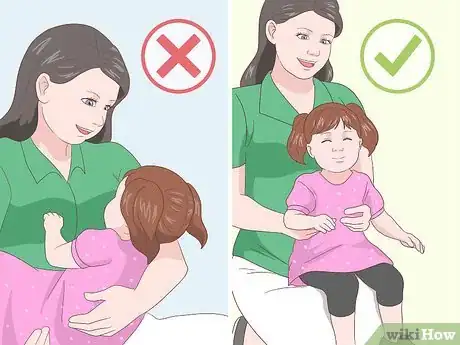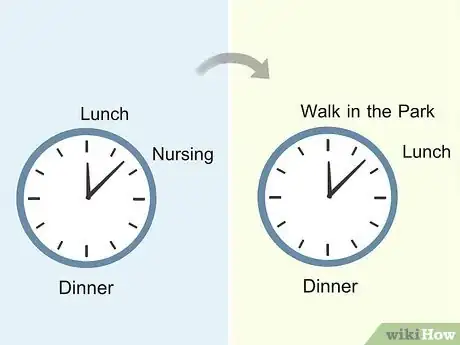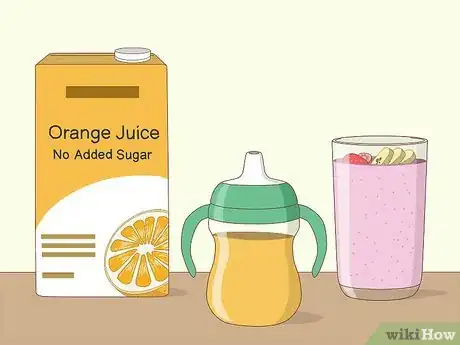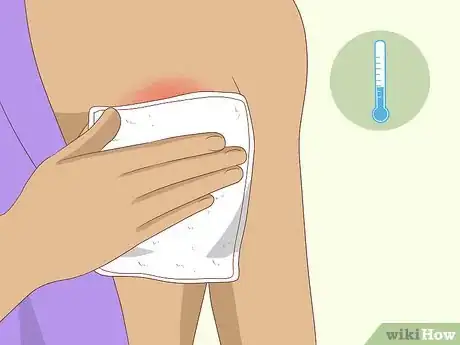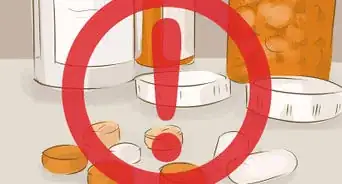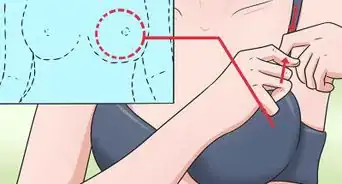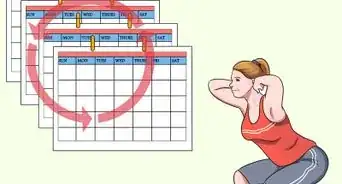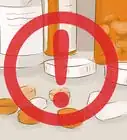This article was co-authored by Sarah Siebold, IBCLC, MA and by wikiHow staff writer, Amy Bobinger. Sarah Siebold is an International board certified Lactation Consultant (IBCLC) and Certified Lactation Educator Counselor (CLEC) based in Los Angeles, California. She runs her own lactation consulting practice called IMMA, where she specializes in emotional support, clinical care, and evidence-based breastfeeding practices. Her editorial work about new motherhood and breastfeeding has been featured in VoyageLA, The Tot, and Hello My Tribe. She completed her clinical lactation training in both private practice and outpatient settings through the University of California, San Diego. She also earned her M.A. in English and American Literature from New York University.
There are 11 references cited in this article, which can be found at the bottom of the page.
wikiHow marks an article as reader-approved once it receives enough positive feedback. This article received 16 testimonials and 91% of readers who voted found it helpful, earning it our reader-approved status.
This article has been viewed 355,137 times.
If you've nursed your baby all the way into toddlerhood, congratulations! That's a lot of work, and while you're probably looking forward to being near the end of it, it's normal to have mixed emotions about the transition away from breastfeeding. However, you can help ease the process by making gradual changes and focusing on the relationship between you and your toddler.
Steps
Weaning Your Toddler Gradually
-
1Start weaning at a time when things are calm. Don't start weaning when your child isn't feeling well or when your family is going through any kind of transition. That much change at once could feel overwhelming and scary to a small child, and they might be more resistant to weaning in general.[1]
- For instance, it's probably best to wait a few weeks if you've recently gone back to work, moved to a new home, or had a new baby, or if your toddler has recently switched daycares or hasn't been feeling well.
-
2Explain what's going on to your child. Even if your toddler isn't talking much yet, they can still understand a lot of what you say. Talk to them in simple language to prepare them for the idea of weaning, and give them plenty of reassurance that you'll still make time to cuddle and spend time together.[2]
- For instance, you might say something along the lines of, "Mommy's milk is going away," or, "You're getting bigger and don't need to nurse anymore."
- You could follow that with something like, "But, when we don't have to stop for milk, we'll have more times to play games and sing songs. What's your favorite game to play with me?"
Advertisement -
3Introduce new breastfeeding limits. At the start of weaning, explain to your child that from now on, there will be new times for nursing. Explain any changes you're making that revolve around breastfeeding, then stick with the new rules. However, you don't have to make this a big deal—try to say it casually, so your child will be more likely to roll with the changes.[3]
- For instance, you might say, "I'm so proud of how much you're growing! Since you're such a big kid now, I'm going to give you a sippy cup of milk for snack time from now on!"
- If you'll be making any other changes to help make weaning easier, like not breastfeeding when you're out of the house, or only breastfeeding in a certain area, explain that too. Limiting your nursing sessions to certain times or places may help ease the transition.
-
4Reduce the number of nursing sessions one at a time. Think about all the times that your toddler nurses during the day. Then, choose one feeding at a time to eliminate. Find something to do to occupy your toddler when they would normally be nursing, and wait about a week for them to adjust to the change. Then, cut out another daily feeding at a time until you've weaned your toddler completely.[4]
- For instance, if your baby normally nurses first thing in the morning, after lunch, in the early evening, and before bed, you might skip the feeding after lunch.
- A slow and gradual cessation is better for both you and your baby. Abruptly ceasing all nursing sessions can be upsetting, and it can even make you more susceptible to developing a clogged breast duct, inflammation, or the painful breast infection mastitis.[5]
EXPERT TIPSarah Siebold is an International board certified Lactation Consultant (IBCLC) and Certified Lactation Educator Counselor (CLEC) based in Los Angeles, California. She runs her own lactation consulting practice called IMMA, where she specializes in emotional support, clinical care, and evidence-based breastfeeding practices. Her editorial work about new motherhood and breastfeeding has been featured in VoyageLA, The Tot, and Hello My Tribe. She completed her clinical lactation training in both private practice and outpatient settings through the University of California, San Diego. She also earned her M.A. in English and American Literature from New York University.International Board Certified Lactation Consultant
 Sarah Siebold, IBCLC, MA
Sarah Siebold, IBCLC, MA
International Board Certified Lactation ConsultantOur Expert Agrees: When you're weaning your child, start by dropping a feeding that your baby isn't as emotionally attached to, like one in the middle of the day. Let your child adjust to that for about 3 days, then pick another one to drop. The feedings around naptime and bedtime are usually hardest to let go of, since there's a strong association between sleep and breastfeeding for comfort, so save them for last.
-
5Shorten each breastfeeding session by a few minutes at a time. As you gradually cut down on your nursing sessions each day, you can also shorten the remaining sessions. Pay attention to how long your child normally nurses. Then, keep an eye on the clock and try to cut 1-2 minutes off of each feeding. Wait a few days, then cut another 1-2 minutes off.[6]
- This will make weaning easier on your body, since you're gradually reducing your milk supply. It may also help your toddler wean more easily, since they'll learn that they won't get full at each feeding.
-
6Let your child ask to nurse, rather than you offering. Sometimes the easiest way to wean your child is to let them run the show. Try simply not offering your breasts to your child anymore. If they ask to nurse at one of their normal times, let them, but try to stick to your normal schedule, and let it be their idea.[7]
- You know your child best, so pay attention to how they're coping with the changes. For instance, if they seem more clingy or anxious than usual, or if they start throwing more tantrums or regressing on things like potty training or sleeping through the night, you may need to add one feeding back for a week or two.
-
7Give your baby extra attention and affection during weaning. Recognize that your baby will be affected by the weaning process as well. They may have outbursts of anger, or they may be especially clingy and anxious. Try to be patient, and give them as much reassurance as you can so they can navigate the change confidently.[8]
- For instance, you might create a new bedtime ritual where you sing a song, read a book, and cuddle every night.
-
8Have a celebration the day you stop nursing for good. When you've cut back on nursing enough that the end is in sight, try setting a special day to be the end of nursing. That day, have a small celebration, with a special treat like cupcakes or ice cream. That can help your child think of weaning as something special and positive, rather than a negative event.[9]
- Try saying something like, "Ok Hannah, let's pick a day next week to stop nursing. We'll have a party that day! What do you think about Thursday?" You can even circle the day on the calendar so you have something to look forward to.
Avoiding Triggers
-
1Distract your baby when you're skipping a feeding. If your toddler wants to nurse but it's a feeding you've already eliminated, do your best to keep them busy during that time. Fortunately, toddlers are easily distracted, so it might only take going for a walk or taking a ride in the car.[10]
- You could also sing a song your toddler loves, play a silly game, or call a family member for a chat. Be creative and do whatever it takes to change their focus.
- Since your child probably associates cuddling with nursing, it's best to do something that will get them up and moving.
-
2Try not to change your clothes in front of your toddler. While you're weaning your baby, it's best to avoid letting them see your bare breasts, since that will likely trigger them to want to nurse. Try to avoid getting undressed in front of your child, and avoid bathing or showering with them through the weaning process.[11]
- If you and your family are normally comfortable changing in front of each other, this change doesn't have to be forever. Just take a break while you're weaning.
-
3Hold your toddler in a different position. If you normally sit with your toddler cradled against your body when you're nursing, try your best to avoid that position while you're weaning. That way, your child won't naturally expect to feed, which could help you sidestep a tantrum.[12]
- Instead, you might sit with them perched on your knees, you could have your child sit beside you, or you might try standing up more often.
-
4Change up your schedule to avoid your regular nursing routine. If there's anything that you normally did while you were nursing, like sitting in a certain chair or going into a certain room, try to avoid that as much as possible. By changing up your schedule and staying away from things that would normally trigger your child to want to nurse, you may be able to help keep nursing off their mind a little longer.[13]
- For instance, if your child normally nurses just after lunch, you might plan a trip to the grocery store or the park during that time.[14]
-
5Help your baby fall asleep when you're cutting bedtime feedings. Weaning your baby from nighttime feedings can be the hardest, because they typically use those as a way to fall asleep. If they seem to have trouble falling asleep, try going for a quiet drive around bedtime, or give them a cup of warm milk and sing their favorite song.[15]
- Be patient—your child may need a few days to get used to a new routine if they're used to nursing themselves to sleep, but they'll get the hang of it and so will you.
Offering Substitutes
-
1Swap out the breast for a bottle if your toddler is younger. If you'd like your toddler to continue drinking breastmilk, or if you'd prefer to switch to cow's milk, try offering them a bottle when you would normally breastfeed them. Of course, keep in mind that you'll still have to wean your baby off of the bottle when the time comes. However, if you're having trouble weaning them off of your breast, this may help make the transition easier.[16]
- Sometimes breastfed babies will reject a bottle, but if you give them one when they're playing or riding in a stroller, they may be more open to accepting it.
-
2Give your toddler a tasty drink in a sippy cup. Replace a breastfeeding session with a cup of milk, no-sugar-added fruit juice, or even a healthy fruit smoothie. If your toddler is interested enough with what's in their cup, they may hardly notice that they didn't nurse.[17]
- For instance, you might make a smoothie by blending a banana, a few strawberries, and a splash of milk until it's smooth. Just make sure it's thin enough to go through the sippy cup nozzle! If it isn't, add more milk to adjust the consistency.
-
3Offer healthy snacks to your baby. Yummy snacks are a distraction to your baby, and they may easily forget their desire to nurse at the moment if they see their favorite snack get pulled out of the cabinet. In addition, giving your baby healthy snacks will help replace some of the nutrients they're no longer getting from breastmilk.[18]
- For instance, you might offer your baby fresh fruit, yogurt, or whole-grain toast with peanut butter.
Coping with Physical and Emotional Changes
-
1Express 1–2 fl oz (30–59 ml) of milk if your breasts are engorged. When you're weaning your child, your body will still produce breast milk. This can sometimes be uncomfortable, especially when your breasts become full. To help relieve your discomfort, use your hands or a pump to release a small amount of milk from your breasts.[19]
- Do not remove too much milk, as this will only make the body think it needs to produce more milk.
- Try massaging your breasts in the shower if they feel very tender or full.
-
2Apply cold compresses to your breasts if they become sore. If your breasts are swollen and painful and expressing them hasn't helped, try making your own cold compress. Dip a washcloth in ice water, then drape it over your breast. Do the same for the other breast, and leave it in place for about 10-15 minutes.[20]
- You can repeat this every hour or so, as needed.
- Alternatively, try placing a few cabbage leaves on the breasts. Cabbage leaves are helpful with pain relief and the milk cessation process.[21]
-
3Be patient with yourself if you feel emotional or upset. When you stop breastfeeding, the hormones in your body may shift. These hormonal changes can sometimes affect your moods, so be prepared for a bit of an emotional roller coaster as your body adjusts to the change.[22]
- In addition to the hormonal shifts, you may also feel mixed emotions about ending the special nursing bond with your baby. This is totally normal! Just remember that you're building a new relationship with your big kid, and they'll still love you just as much.
-
4Avoid feeling guilty for weaning your baby. When your baby pleads with you to nurse, you might struggle with feeling heartbroken, frustrated, or even selfish. However, keep in mind that your toddler will adjust to the new feeding schedule soon, and congratulate yourself that you were able to keep nursing into toddlerhood!
- If you're overwhelmed by feelings of guilt, sadness, anxiety, or depression, it could be depression due to the hormonal changes in your body. Talk to your doctor about what you're feeling.[23]
Warnings
- Speak to a professional if depression becomes severe during the course of weaning. This may be a result of your changing hormones.[24]⧼thumbs_response⧽
References
- ↑ https://www.whattoexpect.com/toddler/weaning-a-toddler.aspx
- ↑ https://www.whattoexpect.com/toddler/weaning-a-toddler.aspx
- ↑ https://raisingchildren.net.au/toddlers/nutrition-fitness/common-concerns/weaning-older-children
- ↑ https://raisingchildren.net.au/toddlers/nutrition-fitness/common-concerns/weaning-older-children
- ↑ https://www.laleche.org.uk/breastfeeding-ends-suddenly/
- ↑ https://www.whattoexpect.com/toddler/weaning-a-toddler.aspx
- ↑ https://www.llli.org/breastfeeding-info/weaning-how-to/
- ↑ https://raisingchildren.net.au/toddlers/nutrition-fitness/common-concerns/weaning-older-children
- ↑ https://www.whattoexpect.com/toddler/weaning-a-toddler.aspx
- ↑ https://www.laleche.org.uk/thinking-of-weaning/
- ↑ https://raisingchildren.net.au/toddlers/nutrition-fitness/common-concerns/weaning-older-children
- ↑ https://www.llli.org/breastfeeding-info/weaning-how-to/
- ↑ https://www.llli.org/breastfeeding-info/weaning-how-to/
- ↑ https://www.whattoexpect.com/toddler/weaning-a-toddler.aspx
- ↑ https://raisingchildren.net.au/toddlers/nutrition-fitness/common-concerns/weaning-older-children
- ↑ https://kidshealth.org/en/parents/weaning.html
- ↑ https://www.laleche.org.uk/thinking-of-weaning/
- ↑ https://raisingchildren.net.au/toddlers/nutrition-fitness/common-concerns/weaning-older-children
- ↑ https://www.laleche.org.uk/breastfeeding-ends-suddenly/
- ↑ https://www.healthlinkbc.ca/health-topics/hw133953
- ↑ https://www.breastfeeding.asn.au/bfinfo/lactation-suppression
- ↑ https://www.breastfeeding.asn.au/bfinfo/weaning-toddlers
- ↑ https://psychcentral.com/health/can-breastfeeding-affect-your-mental-health#weaning-and-mental-health
- ↑ https://psychcentral.com/health/can-breastfeeding-affect-your-mental-health#weaning-and-mental-health
About This Article
To stop breastfeeding a toddler, start by eliminating 1 nursing session a day for a period of 1 week. Then, eliminate 2 sessions a day for the following week, and so on, to gradually wean your toddler off of nursing. During the weaning process, try to avoid triggers that remind your baby of nursing, like sitting in the chair that you normally used for breastfeeding. Additionally, if your toddler asks to nurse, attempt to distract your child by going for a walk together or singing a song. To learn how to prevent clogged milk ducts while weaning your toddler, keep reading!
